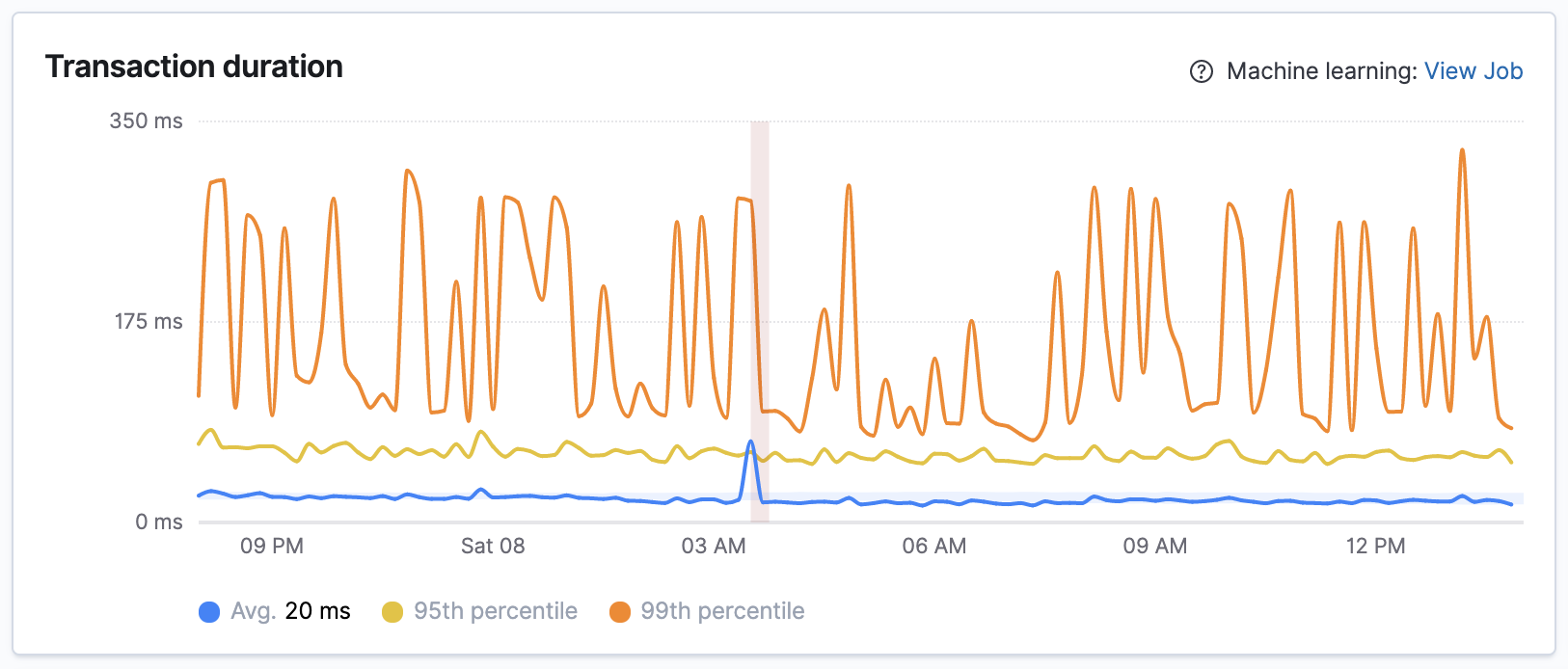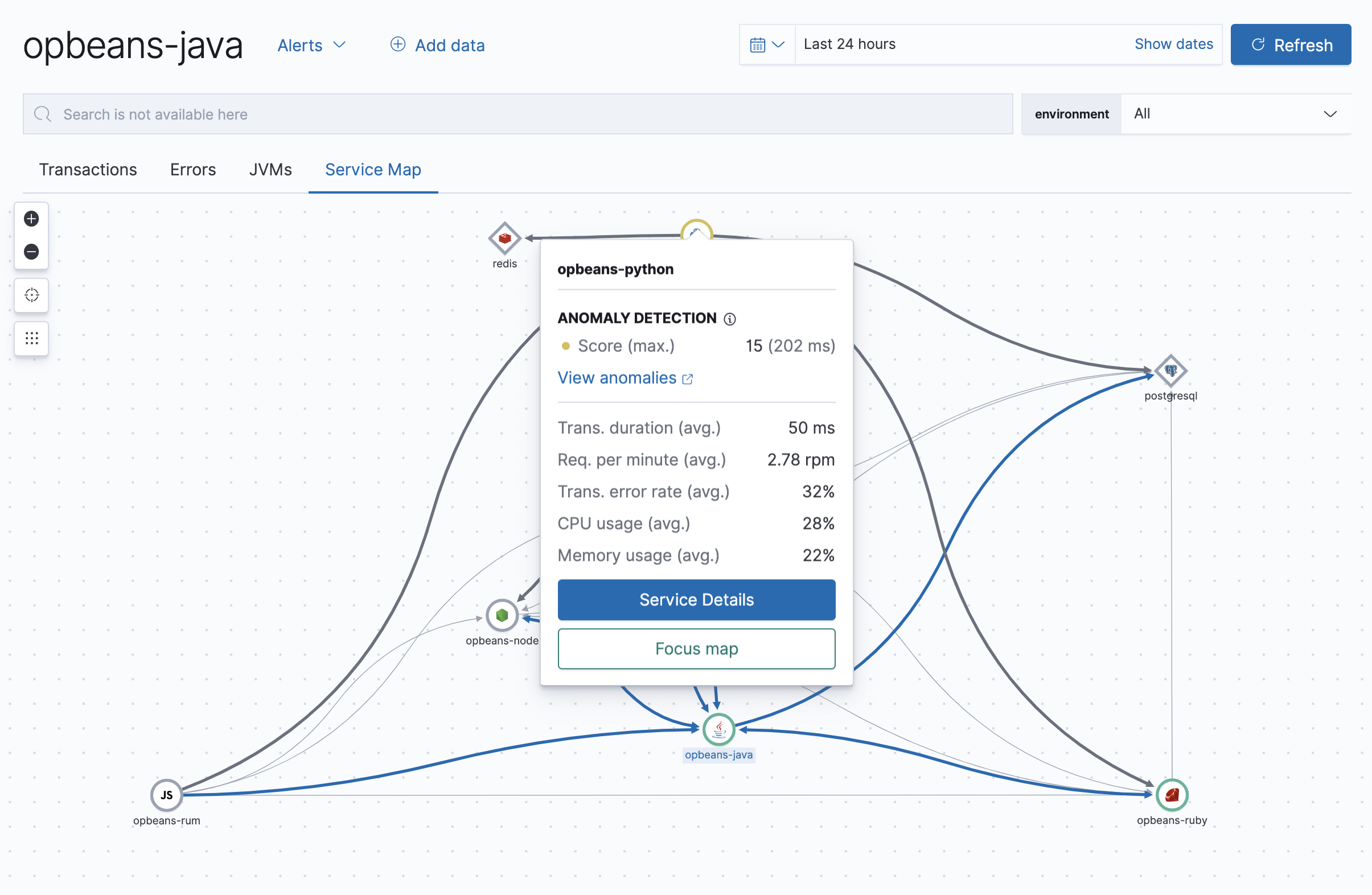Machine learning integration
editMachine learning integration
editThe Machine learning integration initiates a new job predefined to calculate anomaly scores on APM transaction durations. With this integration, you can quickly pinpoint anomalous transactions and see the health of any upstream and downstream services.
Machine learning jobs are created per environment, and are based on a service’s average response time. Because jobs are created at the environment level, you can add new services to your existing environments without the need for additional machine learning jobs.
Results from machine learning jobs are shown in multiple places throughout the APM app:
-
The Services overview provides a quick-glance view of the general health of all of your services.

-
The transaction duration chart will show the expected bounds and add an annotation when the anomaly score is 75 or above.

-
Service maps will display a color-coded anomaly indicator based on the detected anomaly score.

Enable anomaly detection
editTo enable machine learning anomaly detection:
- From the Services overview, Traces overview, or Service Map tab, select Anomaly detection.
- Click Create ML Job.
- Machine learning jobs are created at the environment level. Select all of the service environments that you want to enable anomaly detection in. Anomalies will surface for all services and transaction types within the selected environments.
- Click Create Jobs.
That’s it! After a few minutes, the job will begin calculating results; it might take additional time for results to appear on your service maps. Existing jobs can be managed in Machine Learning jobs management.
APM specific anomaly detection wizards are also available for certain Agents. See the machine learning APM anomaly detection configurations for more information.
Anomaly detection warning
editTo make machine learning as easy as possible to set up, the APM app will warn you when filtered to an environment without a machine learning job.
